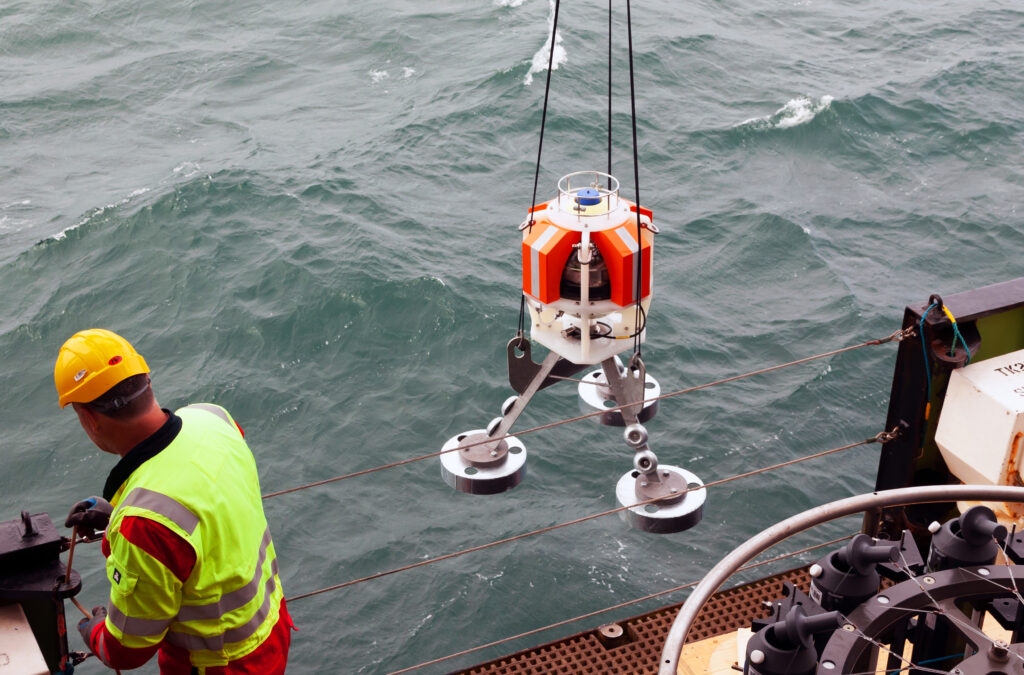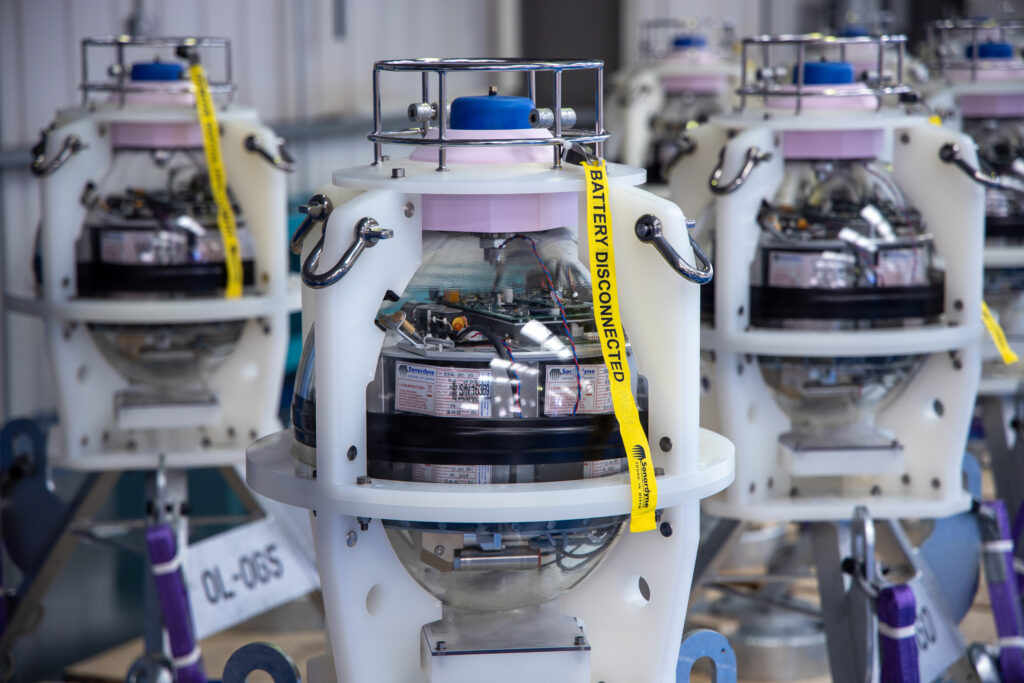How can we help?
What is a PIES and how does it work?
18 January 2024
What is a PIES?
A Pressure Inverted Echo Sounder (PIES) is a subsea monitoring instrument, widely used across the ocean science industry, for measuring the average sound speed through a column of water.
How does a PIES work?
A PIES works by transmitting a sound pulse from the instrument on the seabed to the sea surface and back, measuring the time it takes for the pulse to travel the round trip. It will also measure the depth of the water column using a high accuracy pressure sensor; the pressure sensor measures the pressure of the water above the PIES, which is directly proportional to the depth of the water. By combining the depth and travel time, the average sound speed in the water column can be calculated. PIES instruments are typically deployed on the seabed from a ship or remotely operated vehicle. They can be configured to operate for periods of several months or up to 5 years.
An example of how Pressure Inverted Echo Sounders have been used in ocean science studies is work done by the University of Rhode Island researching the Gulf of Mexico Loop Current and the loop current eddies it regularly sheds. Their research study included a major deployment of PIES. For the purpose of this study, they modified the design of our PIES to integrate a current meter, making it a CPIES, allowing them to harvest near-seabed current data. Combining this data from the array of PIES and near-bottom current meters with historic water profile data was then used to calculate currents throughout the full water column over an extended area, which for this project totalled over 50,000 sq km. The long-term objective of this study is to improve the forecasts of the Loop Current to increase the safety of operations in the Gulf. Find out more here
There are a wide range of oceanographic applications for a PIES: monitoring ocean currents and circulation patterns, measuring salinity, studying the effects of climate change on the ocean, measuring the density of the water column (which is important for understanding ocean dynamics). Furthermore, PIES can also be used within commercial applications, such as: offshore oil and gas exploration and production, marine engineering and construction, and cable and pipeline routing.
Pressure Inverted Echo Sounders are available at either 3,000 or 6,000 m depth rating and can be deployed for over 5 years.



Contact support@sonardyne.com for more information.
Looking for more content?
Find more product support in our Knowledgebase
Haven't found what you're looking for?
Then speak to one of our team for expert help




